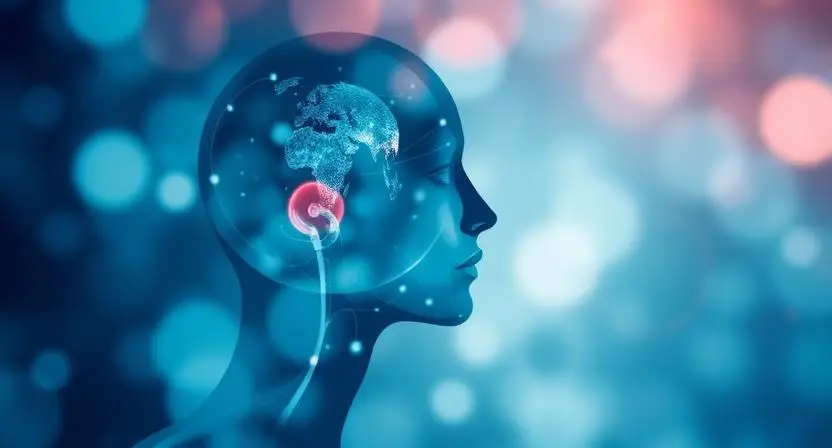In the age of stress, burnout, and overwhelming responsibilities, emotional health is more crucial than ever. While mindfulness practices like meditation and breathing exercises have gained popularity in recent years, they often offer only a partial solution. Advanced approaches to emotional health go beyond mindfulness to provide deeper, more lasting transformation. These methods can help individuals not only manage their emotions but also heal past traumas, regulate their nervous system, and foster true emotional resilience. This article will explore why it’s essential to move beyond mindfulness, the limitations of traditional practices, and cutting-edge methods that can help enhance emotional well-being.
Why Emotional Health Matters in Today’s Fast-Paced World
In today’s fast-paced, constantly connected world, emotional health is more important than ever. The rise of chronic stress, anxiety, and depression has led to an increasing need for individuals to take control of their emotional well-being. Emotional health directly impacts our physical health, relationships, and overall quality of life. While mindfulness has proven to be effective in reducing stress and promoting emotional awareness, it may not be enough for those facing deeper emotional issues or trauma. To achieve profound emotional healing and resilience, it’s necessary to explore advanced approaches that go beyond the limits of mindfulness.
1. The Limits of Mindfulness: Why We Need Advanced Approaches
Mindfulness is a powerful tool for emotional health, but it’s not a one-size-fits-all solution. While it can help individuals manage stress and increase emotional awareness, it often falls short in addressing deeper emotional wounds or providing long-term emotional regulation. Understanding the limitations of mindfulness is key to knowing when it’s time to explore more advanced emotional health techniques.
What Mindfulness Can (and Can’t) Do for Emotional Health
Mindfulness primarily helps individuals become more aware of their thoughts and emotions, enabling them to manage stress and reduce anxiety. It encourages the practice of observing emotions without judgment, fostering acceptance and presence. However, mindfulness doesn’t always resolve deep-rooted emotional issues like trauma or complex emotional patterns. It may also fail to provide the tools necessary for long-term emotional regulation, especially for those with persistent emotional triggers or unresolved trauma.
Common Misconceptions About Mindfulness
One common misconception is that mindfulness alone can “fix” emotional issues or heal past trauma. While mindfulness can be helpful in cultivating awareness, it does not offer specific tools to work through deeply ingrained emotional wounds. Another misconception is that mindfulness can instantly lead to emotional peace. In reality, the process is gradual, and emotional healing often requires more than just mindful observation.
Scientific Evidence on the Gaps in Mindfulness Practices
Scientific research has highlighted that while mindfulness can reduce immediate emotional distress, it does not always provide lasting emotional transformation. A study published in Psychological Science revealed that while mindfulness could reduce symptoms of anxiety and depression, it didn’t significantly alter brain patterns related to long-term emotional regulation. This gap highlights the need for more advanced approaches to achieve sustainable emotional health.
Signs You’re Ready for Deeper Emotional Work
If you’ve been practicing mindfulness but still feel “stuck” or unable to move past emotional barriers, it may be time to explore deeper emotional work. Here are some signs that you’re ready for more advanced techniques:
Persistent Emotional Triggers
If you’re still easily triggered by certain emotions or situations despite practicing mindfulness, it may indicate that deeper emotional issues need to be addressed. Persistent triggers often point to unresolved trauma or ingrained emotional patterns that mindfulness alone cannot heal.
Feeling "Stuck" Despite Meditation
Feeling stuck or like you’re not making progress, despite regular meditation or mindfulness practices, is a clear sign that more advanced methods might be needed. If you continue to experience emotional distress despite your efforts, it’s time to explore alternative approaches.
2. Cutting-Edge Techniques for Emotional Well-Being
Once you’ve acknowledged the limits of mindfulness, you can begin exploring more advanced techniques for emotional health. These methods provide deeper, more transformative healing that goes beyond surface-level emotional management.
Somatic Therapy: Healing Through the Body
Somatic therapy focuses on the connection between the body and emotions, helping individuals release pent-up emotions stored in their physical body. This approach is particularly effective for those who have experienced trauma, as emotional pain can be stored in the body and affect physical health.
How Trauma Gets Stored in the Body
When individuals experience trauma, it can become trapped in the nervous system and manifest as tension, pain, or emotional blockages in the body. This is why somatic therapy emphasizes body awareness as a means of releasing these emotional blockages, leading to greater emotional freedom.
Practical Exercises to Release Emotional Tension
Somatic exercises include techniques such as deep breathing, body scanning, and physical movement (like yoga or dance) to help individuals release stored emotions. These exercises allow individuals to reconnect with their bodies and begin the process of emotional healing.
Polyvagal Theory: Rewiring Your Nervous System
Polyvagal theory, developed by Dr. Stephen Porges, focuses on how the vagus nerve influences emotional regulation and stress response. It proposes that the state of our autonomic nervous system plays a crucial role in how we manage stress and emotions.
How the Vagus Nerve Controls Your Emotional Responses
The vagus nerve is responsible for regulating the parasympathetic nervous system, which governs our “rest and digest” response. When this system is activated, we feel calm, balanced, and emotionally regulated. However, chronic stress or trauma can dysregulate the vagus nerve, leading to emotional instability.
Daily Practices to Activate the "Rest and Digest" State
Daily practices to stimulate the vagus nerve include deep breathing exercises, cold exposure (like splashing cold water on your face), and practices like chanting or humming. These techniques help promote emotional balance and activate the parasympathetic nervous system.

Psychedelic-Assisted Therapy (Under Professional Guidance)
Psychedelic-assisted therapy is an emerging approach that uses substances like psilocybin (magic mushrooms) or MDMA to facilitate emotional breakthroughs, particularly for individuals with severe trauma or PTSD. These substances, when used in a controlled, therapeutic environment, can help individuals confront deeply buried emotions and achieve profound emotional healing.
The Science Behind Psychedelics and Emotional Breakthroughs
Research has shown that psychedelics can alter brain chemistry, enabling individuals to process and release emotional traumas in a way that traditional therapies can’t. Studies have found that psychedelics can help reset neural pathways, providing new perspectives on old emotional wounds.
Legal and Safe Alternatives (e.g., Breathwork, Holotropic Techniques)
While psychedelic therapy remains highly regulated, there are legal and safe alternatives, such as breathwork or Holotropic Breathwork, that can induce similar emotional breakthroughs without the use of substances. These techniques harness the power of controlled breathing to alter consciousness and facilitate emotional release.
3. Technology and Emotional Health: The Future of Self-Regulation
As technology continues to advance, so does the potential for innovation in emotional health practices. Tools like biofeedback and AI-based mental health apps offer individuals more accessible ways to monitor and regulate their emotions.
Biofeedback and Neurofeedback for Emotional Balance
Biofeedback and neurofeedback are techniques that help individuals learn how to control physiological processes (like heart rate and brainwave patterns) to improve emotional regulation.
How Wearables Can Track Emotional States
Wearable devices like heart rate monitors and EEG headbands can track real-time emotional states, offering feedback on stress levels, emotional triggers, and relaxation. This feedback helps individuals take immediate action to calm themselves and improve emotional well-being.
Best Apps for Advanced Emotional Regulation
There are several apps available today that incorporate biofeedback and neurofeedback to help individuals regulate their emotions. Apps like HeartMath and Muse provide guided exercises and real-time data to assist in emotional self-regulation.
AI and Emotional Health: Can Chatbots Really Help?
The rise of mental health chatbots powered by artificial intelligence has opened up new possibilities for emotional support. These digital assistants can provide immediate emotional relief and coping strategies, making mental health support more accessible than ever.
The Rise of Mental Health AI (Pros and Cons)
While AI-powered chatbots can be useful for addressing immediate emotional needs, they lack the human empathy and nuance that a licensed therapist can provide. However, they offer a valuable supplement to traditional therapy, particularly for those who may not have access to mental health professionals.
Ethical Considerations in Digital Emotional Support
As AI becomes a more prevalent tool in mental health, ethical concerns arise regarding privacy, data security, and the potential for over-reliance on digital assistants instead of human professionals. It’s important for individuals to use these tools responsibly and seek professional guidance when needed.
Conclusion: Integrating Advanced Approaches for Lifelong Emotional Resilience
Achieving emotional resilience requires more than just mindfulness. By exploring advanced techniques such as somatic therapy, polyvagal theory, psychedelic-assisted therapy, and new technologies, individuals can experience deeper emotional healing and regulation. It’s important to remember that these methods are best used in conjunction with professional guidance to ensure safety and effectiveness. By integrating these advanced approaches, individuals can build lifelong emotional resilience and achieve a balanced, fulfilling life.

1 thought on “Emotional Health: Advanced Approaches Beyond Mindfulness”
Comments are closed.